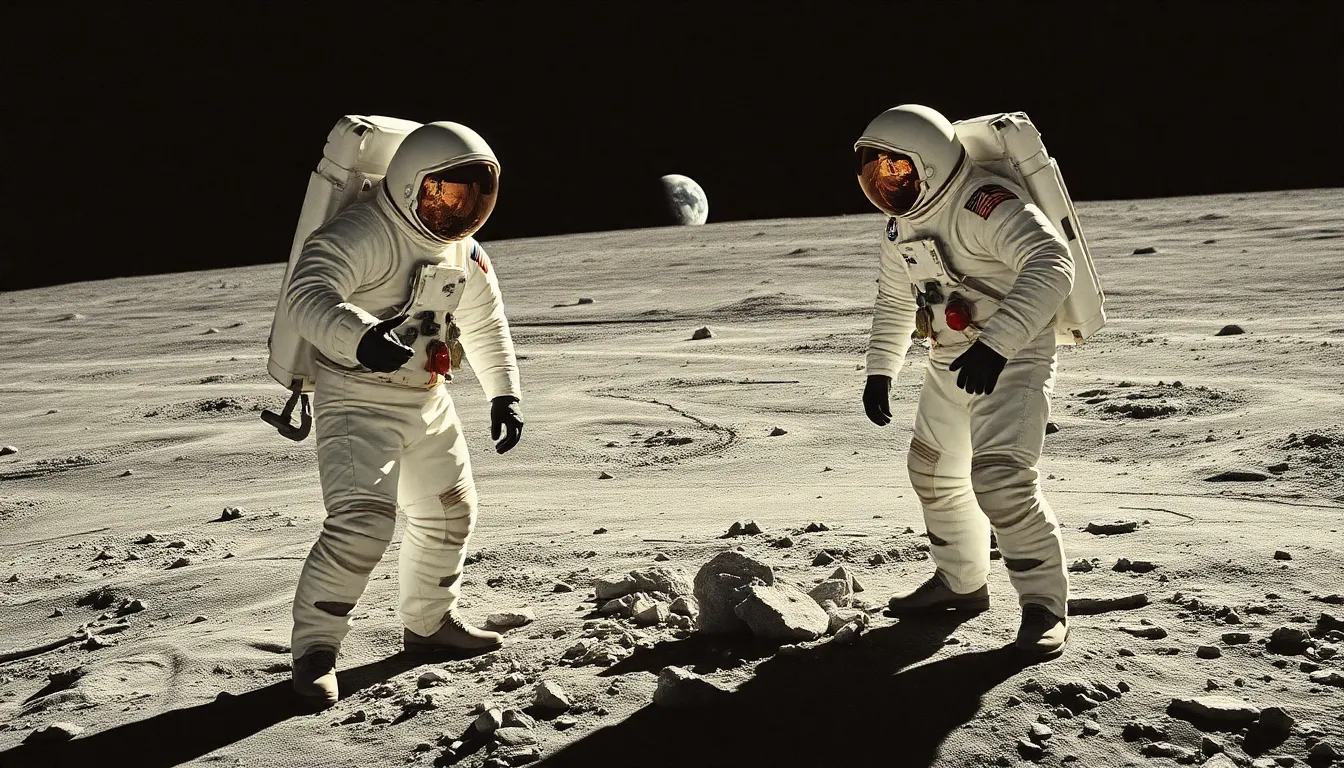Table of Contents
ToggleThe moon isn’t just a shiny rock in the sky; it’s humanity’s next big adventure! Lunar missions have captivated imaginations since the first Apollo landing, but now they’re gearing up for a cosmic renaissance. With ambitious plans from space agencies and private companies alike, the race to the moon is on, and it’s more exciting than a cat video gone viral.
Overview Of Lunar Missions
Lunar missions encompass a series of exploratory endeavors aimed at studying the moon. These missions, both crewed and uncrewed, explore various scientific, technological, and commercial opportunities. Leading space agencies, including NASA and ESA, focus on understanding the moon’s geology and potential resources.
Recent initiatives emphasize a return to the lunar surface. NASA’s Artemis program plans to land humans on the moon by 2025. ESA’s Luna 27 aims for a 2025 launch, targeting the moon’s south pole region. Additionally, China’s Chang’e program continues to contribute valuable insights, with Chang’e 4 already making historic soft landings.
Collaborations between public and private sectors mark a new era in lunar exploration. SpaceX’s Falcon 9 plays a vital role in launching payloads to lunar destinations. Companies like Blue Origin are developing lunar landers, demonstrating increasing commercial interest.
Lunar missions also prioritize international partnerships. Over 40 countries currently engage in various lunar activities. Programs such as the Global Exploration Roadmap foster cooperation in lunar exploration and share scientific knowledge.
Technology advances further enhance lunar mission capabilities. Robots and rovers increasingly conduct remote explorations, while in-situ resource utilization promises sustainable lunar habitats. Future missions will assess the feasibility of mining water and other resources.
Engagement with the public through educational initiatives boosts interest in lunar exploration. Activities such as satellite imagery analysis allow individuals to participate in real time. Lunar missions encapsulate humanity’s enduring curiosity and drive for knowledge beyond Earth.
Historical Lunar Missions

Historical lunar missions laid the groundwork for current explorations, showcasing technological advancements and human curiosity. Notable missions included manned and unmanned endeavors, each contributing significantly to lunar science.
The Apollo Program
NASA’s Apollo program stands out as a landmark in space exploration. This initiative encompassed six successful crewed lunar landings between 1969 and 1972, starting with Apollo 11, which marked humanity’s first steps on the moon. Astronauts Neil Armstrong and Buzz Aldrin collected 47.5 pounds of lunar rocks and soil during this mission. Subsequent missions expanded our understanding of the moon, revealing a diverse geological history and lunar resources. The program concluded with Apollo 17 in December 1972, leaving an enduring legacy that continues to inspire contemporary lunar exploration.
Unmanned Lunar Missions
Unmanned lunar missions have significantly enhanced lunar science and exploration. Missions like Luna 2, launched by the Soviet Union in 1959, became the first human-made object to reach the moon. Following this, the Luna 9 mission achieved a historic soft landing in 1966, providing the first images from the lunar surface. More recently, China’s Chang’e program has made remarkable strides, with significant milestones, such as Chang’e 4’s successful landing on the far side of the moon in 2019. These missions facilitate extensive scientific research and lay the foundation for future human exploration.
Recent Developments In Lunar Exploration
Recent advancements in lunar exploration highlight significant milestones and enhanced efforts by various organizations. Innovations in technology and increased collaboration mark this ongoing journey to the moon.
Artemis Program
NASA’s Artemis Program stands at the forefront of lunar exploration, aiming for a crewed mission by 2025. The program intends to land astronauts near the lunar South Pole, an area rich in water ice and other resources. Artemis will establish a sustainable human presence on the moon, serving as a stepping stone for future Mars missions. By leveraging advanced technologies, Artemis will employ the Space Launch System and Orion spacecraft to facilitate deep space missions. Each launch promises to expand scientific knowledge and inspire future generations of explorers.
International Collaborations
International collaboration plays a vital role in current lunar missions, uniting over 40 countries in pursuit of common goals. The Global Exploration Roadmap reflects a commitment to sharing resources and expertise in lunar research. ESA’s Luna 27 will partner with NASA, utilizing innovative technologies to explore the moon’s South Pole alongside the Artemis mission. China’s Chang’e program continues to provide valuable data, enriching the global understanding of lunar geology and surface processes. By joining forces, nations aim to maximize the impact of their lunar endeavors, driving discoveries that benefit all of humanity.
Future Prospects For Lunar Missions
Exciting developments lie ahead for lunar missions, with numerous projects on the horizon.
Upcoming Missions
NASA plans to send the first woman and the next man to the moon by 2025 as part of the Artemis program. ESA’s Luna 27 aims to land on the moon’s south pole, planned for the late 2020s. China continues to advance its Chang’e program, targeting more complex missions, including sample return efforts by 2025. Other countries, such as India and Japan, are also gearing up for lunar exploration, promising a new era of international collaboration. These initiatives reinforce the global interest in lunar science and encourage shared knowledge among nations.
Potential For Sustainable Presence
Creating a sustainable human presence on the moon forms a critical goal of ongoing missions. Research focuses on in-situ resource utilization, particularly extracting water from lunar ice, vital for long-term habitation. Establishing lunar bases might support future explorations of Mars and beyond, enhancing readiness for deep-space missions. Collaborations between private and public sectors, including companies like SpaceX, are pivotal for developing lunar infrastructure. Innovations in life support systems and habitats are essential for maintaining human life on the moon, showcasing a commitment to future exploration and scientific advancement.
The future of lunar missions is bright and full of promise. With ambitious plans from NASA, ESA, and other global players, humanity stands on the brink of a new era in space exploration. The collaboration between public and private sectors is paving the way for groundbreaking advancements that could redefine our relationship with the moon.
As nations unite to explore the lunar surface and its resources, the potential for scientific discovery and sustainable habitation is immense. These missions not only aim to expand our knowledge but also inspire future generations to reach for the stars. The moon is no longer just a distant dream; it’s becoming a stepping stone for humanity’s journey into the cosmos.





